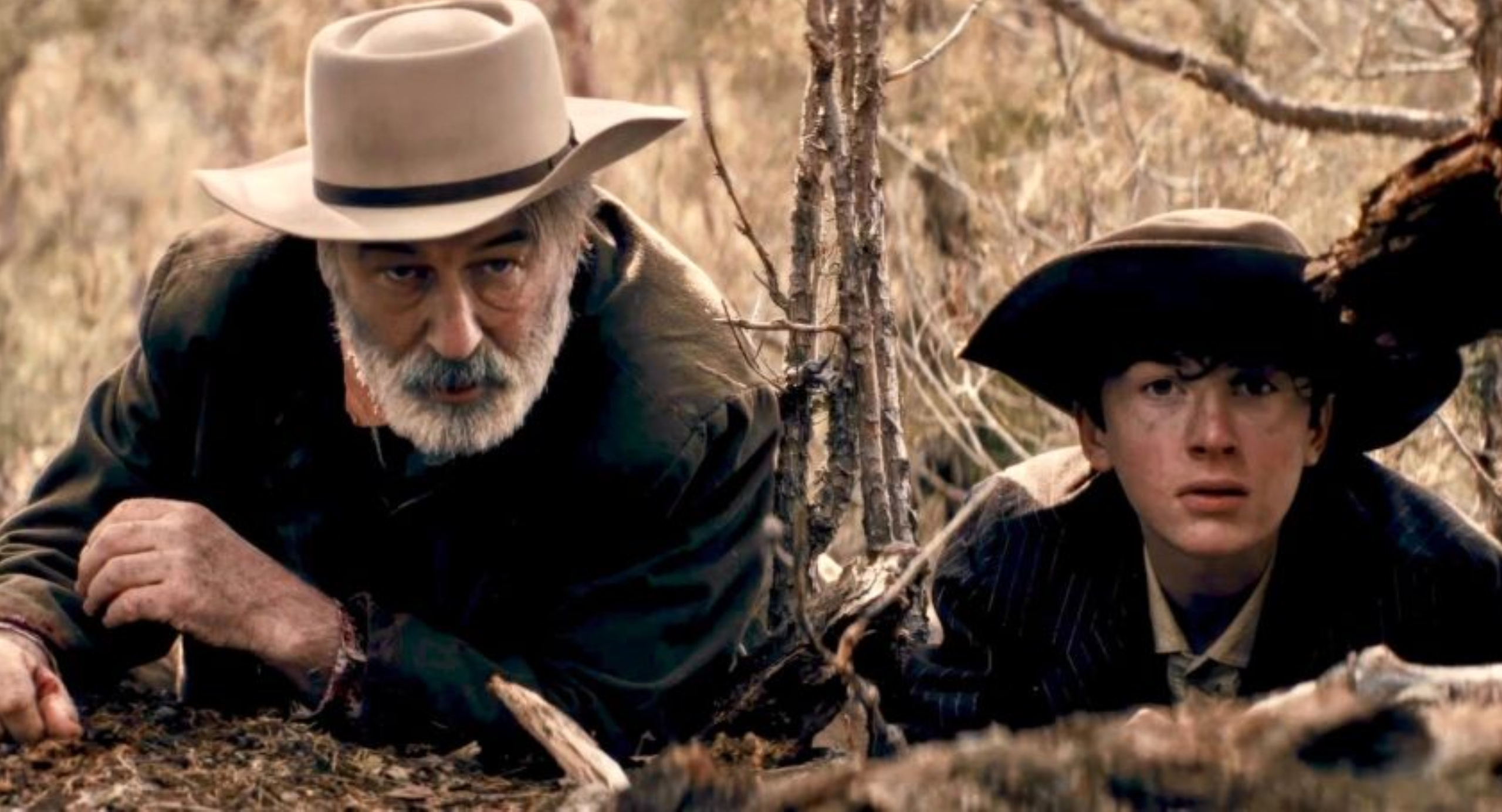Rust – Film Review
Published May 2, 2025

Joel Souza’s Rust, a contemplative Western born from tragedy, arrives under the long shadow of an unspeakable real-life event. As a film, it seeks to tell a story of familial redemption and moral reckoning in the dust-blown plains of 1880s Kansas. As a cultural artifact, however, it is inevitably tethered to the devastating on-set death of cinematographer Halyna Hutchins, whose life was tragically cut short in 2021 when a live round was discharged from a prop revolver wielded by actor and producer Alec Baldwin. No assessment of Rust can be made without acknowledging the immense grief and controversy surrounding the film’s production. That grief radiates through nearly every frame of the final product, giving the film a tension that is not always earned by its own storytelling, but deeply felt nonetheless.
The story unfolds with a sparse, almost mythic simplicity: Harland Rust (Baldwin), an aging gunslinger in self-imposed exile, learns that his 13-year-old grandson Lucas Hollister (Patrick Scott McDermott) has been sentenced to death for an accidental killing. Rust returns to a hostile Kansas landscape to break Lucas free, and together they go on the run, pursued by bounty hunter Fenton “Preacher” Lang (Travis Fimmel), a grim enforcer with a merciless streak and a grudge.
As the fugitives traverse barren plains, abandoned mining towns, and harsh wilderness, the bond between grandfather and grandson begins to grow—but so too does the weight of their sins and the long reach of the law. Interspersed throughout are flashes of past violence, guilt, and the inevitable question of whether a man can ever truly outrun what he’s done.
Baldwin delivers a performance of weary resolve and understated gravitas. His Harland Rust is a man hardened by time, regrets, and war. There’s a slowness to his movements, a gravel in his voice, and a haunted look in his eyes that goes beyond mere acting. Whether intentional or not, Baldwin’s real-world turmoil bleeds into the character, making Harland Rust feel not just like a man running from his past, but from the ghosts of something deeper.
In moments of quiet, Baldwin shows surprising tenderness. But when the film leans into violence or traditional Western tropes, he often seems less physically convincing—more symbolic than formidable. It’s a reminder of his age and the meta-textual weight he carries, but also a strength in portraying a cowboy whose best days are far behind him.
As Lucas Hollister, Patrick Scott McDermott is a welcome surprise. He brings a rawness to the role that keeps the film grounded, especially when the script wades into sentimentality. Lucas is not a plucky tagalong but a frightened, angry boy thrown into a world he barely understands. McDermott’s chemistry with Baldwin is strained in the beginning but gradually warms, paralleling the arc of their characters. Some of the most effective scenes in Rust belong to him—his eyes revealing the conflict between guilt, fear, and the longing for a father figure.
Fimmel’s performance as Fenton “Preacher” Lang, the relentless bounty hunter, is menacing but familiar. With his snarling delivery and grim theological monologues, he leans heavily into the archetype of the self-righteous villain. While effective, especially in a chilling scene involving a captured fugitive, Lang lacks the complexity that would make him a truly memorable adversary. He exists primarily to drive the plot and push Rust into confrontation, rather than offer any thematic counterweight.
Director Joel Souza, who also co-wrote the story with Baldwin, treats the material with sincerity and restraint. The film’s pacing is deliberately measured—some might say sluggish—but it allows for moments of reflection that suit the tone. Souza resists the urge to turn Rust into an action-heavy Western. Instead, the violence arrives in quick, brutal bursts, often more impactful for their scarcity.
It’s impossible not to think of Halyna Hutchins during wide shots of the sweeping Kansas terrain, especially knowing she was the one originally tasked with capturing these vistas. The film’s eventual completion—with Bianca Cline stepping in as cinematographer to finish the project, feels both solemn and symbolic. Rust was her canvas, and even in its final form, echoes of her eye for composition and lighting remain.
Still, some of the imagery lacks the grandeur or innovation of genre standouts. You’ll find dusty trails, sun-bleached fields, and candlelit cabins, but rarely anything that elevates Rust above the average Western visually. The film’s tone is also inconsistent at times, alternating between gritty realism and maudlin pathos without always managing the transition.
The screenplay is serviceable but not particularly daring. There are echoes of Unforgiven and True Grit, but Rust never quite achieves the narrative sophistication of those films. Some of the dialogue can be heavy-handed, with characters leaning into exposition or symbolic declarations. The structure follows a predictable arc—rescue, escape, confrontation—with few deviations. That predictability isn’t fatal, but it does limit the film’s emotional and thematic range.
However, what Rust lacks in originality, it sometimes makes up for in sincerity. The film genuinely seems to care about its characters’ internal conflicts. The central theme—whether men can change, and whether forgiveness is possible—is timeless and handled with humility.
There’s no avoiding the tragedy that hangs over Rust. The decision to complete and release the film after the death of Halyna Hutchins was controversial, and remains so. Some will feel the film should never have been finished; others may see its completion as a tribute. The truth likely lies somewhere in between.
Rust is a decent film with moments of emotional power, elevated more by its context than its content. As a Western, it’s middling—solidly acted, competently directed, but far from essential. As a cultural moment, it’s much harder to define. It is both a tribute and a cautionary tale. Its grief is palpable, its sincerity undeniable. The film may not leave a lasting mark in cinematic terms, but it will be remembered, and not just for what it tried to be, but for the life it inadvertently memorialized.
